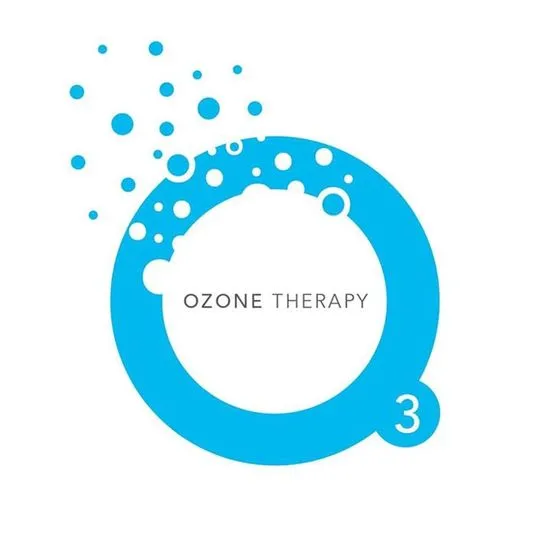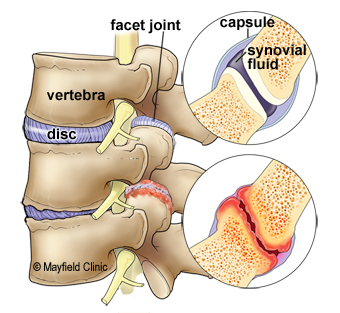Ozone Therapy
Table of Contents
Introduction
Ozone therapy is a medical treatment that involves the controlled use of ozone gas to promote healing and address various health conditions. Ozone (O3) is a molecule composed of three oxygen atoms, and it is a naturally occurring component of Earth’s atmosphere. In the context of ozone therapy, medical-grade ozone gas is administered to patients in a controlled and precise manner.
The therapeutic use of ozone dates back to the late 19th century when it was initially used for disinfection purposes. Over time, its potential benefits for medical applications have been explored, leading to the development of ozone therapy techniques.
Ozone therapy: Chemistry and apparatus
Ozone (O3) is a three-atom molecule made up of three oxygen atoms. It has a molecular weight of 47,98 g/mol and is a thermodynamically unstable molecule that decomposes to pure oxygen with a short half-life depending on system variables such as temperature and pressure.
Ozone is 1.6 times denser and 10 times more soluble in water than oxygen (49.0 mL in 100 mL water at 0° C). Although ozone is not a radical molecule, it is the third most powerful oxidant after fluorine and persulfate (E_ 5 12.076 V). Ozone is an unstable gas that cannot be stored and must be utilized immediately due to its half-life of 40 minutes at 20 °C. Ozone (O3) is created naturally when molecular oxygen (O2) is photodissociated into activated oxygen atoms.
What Conditions Can IV Ozone Therapy Treat?
Practitioners have used ozone treatment for over 100 years and continue to do so throughout Europe and Asia. Ozone can be delivered by IV and site-specific injections. While site-specific injections can assist with joint pain and wound healing, IV ozone addresses diseases such as immunological disorders, respiratory problems, and diabetes, as well as killing bacteria and viruses, which may aid with disease irradiation.
“According to a 2018 study, “Ozone mixed with blood and injected into people significantly reduced their viral load over 2 years.” A lower viral load indicates that there is less virus present, which may be favorable to long-term health.”
IV ozone treatment has several advantages. It can offer a sluggish immune system the boost it needs to perform at a higher level. It also boosts your energy and gives you a sense of well-being. Ozone is even being investigated to determine whether it may be used as a therapy for the COVID-19 virus, with promising results.
IV ozone treatment promotes the formation of antioxidants, which inactivate free radicals and reduce oxidative stress. Reducing oxidative stress helps you stay youthful and energetic. This is also another significant advantage of IV ozone treatment. It delays the aging process at the cellular level. After all, cellular aging is the beginning of aging. As a result, IV ozone therapy is one of the most effective anti-aging therapies available.
Ozone treatment acts on cells, disrupting the natural reproduction process of dangerous invaders in your body.
- Bacteria
- Viruses
- Fungi
- Yeast
- Protozoa
Most immunological illnesses benefit from IV ozone therapy. Scientists revealed that IV ozone can treat over 100 additional ailments and disorders. When used on surfaces and medical equipment, it also functions as a disinfectant and sterilization device.
According to a National Institute of Health (NIH) publication, ozone therapy was employed as a wound treatment as early as World War I. Ozone has not been investigated further since it is not patentable, making it difficult to entice anyone to pursue the study using ozone.
A discussion of utilizing IV ozone for Lyme disease followed in this same article, including research from the author. In this study, a patient who had previously been exposed to and treated for Lyme disease three years prior returned to the clinic with a new Lyme disease cellulitis. Because of his experience with IV ozone, the patient declined IV antibiotics. The cellulitis was nearly gone after 48 hours of IV ozone treatment. IV ozone is critical in the treatment of immunological illnesses such as Lyme disease because it activates the immune system, alerting it to a problem and increasing the immune response.
while germs develop resistance to known studied antibiotics, IV ozone therapy may be the next treatment utilized on bacteria and viruses, while the production of novel antibiotics has become rare.
What is ozone therapy?
Ozone is a kind of oxygen. A layer of ozone gas in the upper atmosphere shields the planet from UV rays from the sun. On the ground, however, ozone is “a harmful air pollutantTrusted Source.”
When a person inhales ozone gas, it causes lung and throat discomfort, coughing, and worsening asthma symptoms. Excessive exposure might result in lung damage and even death.
Some researchers, however, feel that ozone can have therapeutic effects in medical settings. According to one 2011 review by Trustworthy Source, ozone treatment has the following applications:
- treating arthritis
- combating viral illnesses like HIV and SARS
- disinfecting wounds
- activating the immune system
- Treating ischemic heart disease
- treating macular degeneration
- treating cancer
Currently, researchers are investigating the effects of ozone treatment on the human body to uncover any potential therapeutic advantages.
However, little study has been conducted on the genuine usefulness and safety of ozone treatment. As a result, official organizations do not officially sanction its usage.
Does it work?
One 2005 research concluded that there is insufficient evidence to propose ozone therapy for HIV or other viral disorders, heart disease, cancer, skin issues, or a variety of other ailments.
Although ozone has been demonstrated to be effective outside the body against the virus that causes HIV, no study has been conducted yet to demonstrate its safety or efficiency in living individuals.
According to certain studies, ozone treatment can help fight illnesses like cancer by modifying the immune system’s response and restoring oxygen shortages in the body.
However, according to Complementary and Alternative Medicine for Cancer, there have been no randomized controlled studies in cancer patients and just a few human trials of ozone treatment for any ailment.
The FDA bans the use of ozone for “any medical condition for which there is no proof of safety and effectiveness.”
This implies that researchers will need to conduct many more experiments before they can determine the real effects of ozone treatment on the human body and if it has any therapeutic advantages.
Procedures
Ozone is a gas by nature. People apply it to their skin, use ozonated water, blow the gas into their bodies, or utilize an ozone sauna, in which a body part is bagged and subjected to ozone gas.
Because ozone irritates the airways, people must make sure they never inhale the gas.
A practitioner will combine ozone with a person’s blood and inject it for various therapies. This is known as autohemotherapy. Scientific studies have not shown this approach to be safe.
Side effects
The side effects of ozone therapy might vary based on the type of treatment received.
The potential side effects of ozone therapy include:
- Headache
- Nausea
- Vomiting
- Diarrhea
- Dizziness
- Fatigue
- Rash
- Coughing
- Shortness of breath
- Allergic reaction
- Serious complications, such as death, have been reported in rare cases.
Ozone should never be inhaled. It can burn the lips, nose, and eyes and cause coughing, nausea, vomiting, and headaches if it gets into them. Severe exposure might result in respiratory problems.
Ozone treatment patients may occasionally encounter the Herxheimer response. This can create flu-like symptoms and make the individual feel worse in the short term.
Some ozone treatment techniques require the inhalation of gas. When receiving ozone treatment through the rectum, patients may suffer pain, cramps, and an urge to pass gas. These are only transitory side effects.
Is ozone therapy safe?
Although some study sources claim that the benefits of ozone treatment are constant and safe, others claim that there is insufficient data to determine its genuine effectiveness or safety.
The FDA approved the use of ozone as a medical therapy in 2019. They argue that ozone is a dangerous gas with no known positive uses in supportive or preventive medicine.
In the past, ozone treatment caused negative side effects, some of which were severe.
CAM-Cancer reports that “cases of direct intravenous ozone infusion have resulted in pulmonary embolism and death.”
The 2005 study showed that “there are some cases found of ozone therapy leads to air embolism, bloodborne infections, and bilateral visual field loss after taking therapy.”
Ozone gas is hazardous to people. Ozone exposure is linked to “a significant increase in the risk of death from respiratory diseases,” and it has well-documented harmful consequences. When nitrogen dioxide is prevalent in smog, it is a trusted source in people’s lungs.
Even trace levels of ozone can irritate the lungs and throat, causing coughing, shortness of breath, and lung tissue damage.
What does it help treat?
Ozone treatment can be used to treat a range of ailments. Its usefulness and safety are still being studied.
Ozone therapy is used for a variety of conditions, including:
- Chronic pain
- Wound healing
- Immune system support
- Cancer
- HIV/AIDS
- Lyme disease
- Hepatitis C
- Multiple sclerosis
- Headaches
- Migraines
- Asthma
- Allergies
- Herniated Disc
Breathing disorders
People with respiratory issues might benefit from ozone treatment, but further study is needed.
Ozone treatment may help relieve the stress on your lungs by raising the oxygen levels in your blood. The lungs are in charge of giving oxygen to your blood.
A 2014 research investigated intravenous ozone therapy, or injecting ozone mixed with blood, for the treatment of COPD. The treatment enhanced the quality of life and ability to exercise among former smokers with COPD, according to the study.
Be careful that inhaling ozone can irritate or harm the lungs, particularly in persons with respiratory disorders.
Although ozone has certain useful properties, it is also an air contaminant that should not be ingested. As a result, the Environmental Protection Agency (EPA) recommends that ozone air purifiers be avoided.
Diabetes
Ozone treatment has also shown potential in lowering the risk of diabetic complications.
Oxidative stress in the body is frequently the source of complications. According to a reliable source, ozone may alleviate oxidative stress by stimulating the body’s immunological and antioxidant systems and decreasing inflammation.
According to a 2019 study, ozone treatment helped mend wounds and lowered the risk of infection in persons with diabetic foot ulcers.
A 2015 Trusted Source also discovered that ozone therapy might aid with wound healing, which is a typical adverse effect of diabetes.
Immune disorders
Because it appears to activate the immune system, ozone treatment may assist persons with immunological diseases.
A 2018 study discovered that ozone combined with blood and injected into HIV patients drastically lowered their viral load over two years.
A reduced viral load means that less virus is present, which might be beneficial to long-term health.
More research on the use of ozone therapy for HIV treatment is needed, according to the study.
How to prepare for ozone therapy?
Consult your healthcare provider about the best way to prepare for your therapy. They may provide ozone therapy to you by drawing blood from your body, mixing it with ozone gas, and then replenishing it.
Prepare for your blood draw by getting enough sleep the night before and eating a nutritious meal that day if ozone therapy is delivered with your blood.
What happens during treatment?
There are several methods for receiving ozone treatment. Your healthcare provider will go over your treatment options with you.
Ozone administration is used in three different ways:
Straight to the tissue. If you receive ozone therapy for an extremity ailment or wound, the ozone gas will very certainly be delivered directly to the damaged body part’s tissue. The gas is administered through a protective covering.
Intravenously. To treat internal illnesses such as HIV, ozone gas is frequently absorbed into your blood. The blood containing the dissolved gas is then pumped back into you via an IV. Intravenous usage has the potential to cause an embolism due to the development of air bubbles.
Intramuscularly. Ozone treatment can also be administered intramuscularly. The ozone gas is usually mixed with oxygen prior to providing this injection.
Summary
Ozone treatment is a sort of complementary medicine that employs the use of ozone gas. It is contentious owing to concerns regarding its efficacy and safety.
Currently, researchers are investigating the effects of ozone treatment on the human body in order to uncover any potential therapeutic advantages.
Ozone gas is hazardous to people, and little study has been conducted into the safety of ozone treatment. As a result, official organizations presently oppose its usage.
Anyone with questions regarding ozone therapy or whether treatment is best for them should consult their doctor.
FAQ
Depending on the patient’s symptoms and responsiveness to therapy, ozone therapy may be provided as frequently as twice per week. Treatments every 1-2 weeks will improve the majority of people. Acute illnesses may require 3-6 sessions to heal.
Three to four times a week is often the bare minimum. It is necessary to wait three hours between treatments to ensure safety. Ozone enters your body for around 10 minutes and increases glutathione formation when it comes into contact with proteins in your blood.
Uses, benefits, and negative effects of ozone treatment
The side effects of ozone therapy might vary based on the type of treatment received. Ozone should never be inhaled. It can burn the lips, nose, and eyes and cause coughing, nausea, vomiting, and headaches if it gets into them. Severe exposure might result in respiratory problems.
When breathed, ozone can cause lung damage. Ozone in low concentrations can induce chest discomfort, coughing, shortness of breath, and throat irritation. It may also aggravate chronic respiratory illnesses such as asthma and impair the body’s capacity to fight respiratory infections.
Ozone odor eradication is permanent if the source of the smell is eliminated. Before the ozone treatment, your detailer will thoroughly clean your vehicle. It is critical to identify and address the source of any odor.







